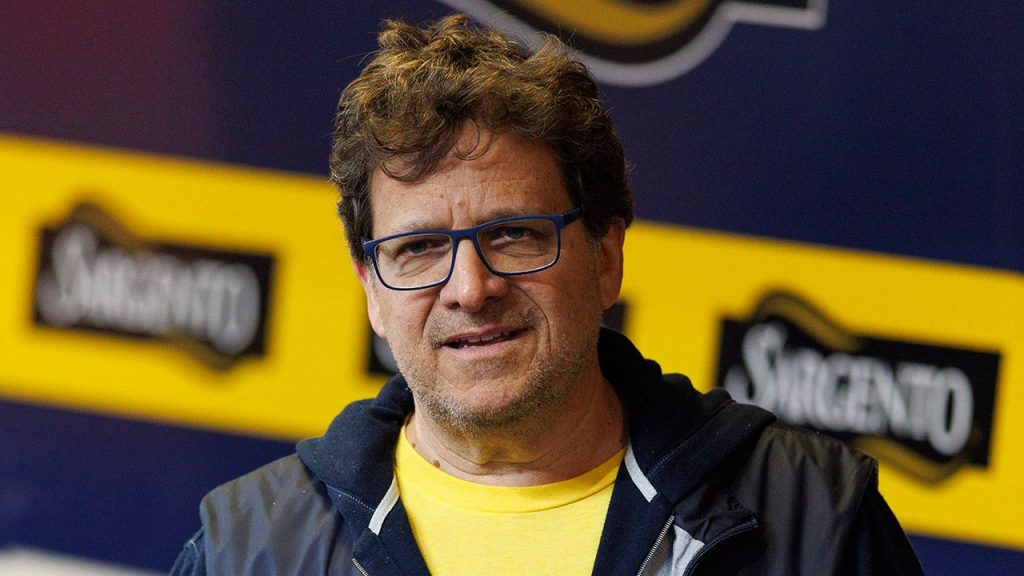The Milwaukee Brewers, led by principal owner Mark Attanasio, are grappling with the complexities of competitive success in Major League Baseball (MLB). Attanasio recently posed a thought-provoking question regarding his dual responsibilities as both an owner and a provider of community entertainment. Balancing the drive for a World Series victory against the reality of a constrained budget and a competitive playing field remains a defining challenge as the Brewers approach the 2025 season.
| Article Subheadings |
|---|
| 1) Attanasio’s Vision: Balancing Success with Entertainment |
| 2) The Milwaukee Brewers’ Current Financial Landscape |
| 3) Strategic Player Investments to Build the Future |
| 4) Comparing Revenue Streams Across Sports Leagues |
| 5) The Brewers’ Place in the Competitive NL Central |
Attanasio’s Vision: Balancing Success with Entertainment
The overarching goal for any MLB team, including the Milwaukee Brewers, is to secure a spot in and ultimately win the World Series. However, Mark Attanasio reflects on a more nuanced mission when considering his role as the team’s principal owner. He asked, “Is my job to win a World Series or is my job to provide a summer of entertainment and passion and a way for families to come together?” This introspection shows a recognition that winning is just one aspect of ownership; fostering community engagement and providing a backdrop for family enjoyment is equally pivotal. Attanasio’s focus on entertainment indicates a desire to balance sports competitiveness with broader community objectives.
The Milwaukee Brewers’ Current Financial Landscape
As the new season approaches, the Brewers have a projected payroll of $117 million, which places them 22nd among MLB teams, notably behind the Colorado Rockies. These figures raise concerns about the team’s ability to invest in high-profile players that could enhance their chances of success. Attanasio acknowledges the challenges, stating, “We don’t have the financial ability to bring in superstars. We try to hold on to whatever we can.” This pragmatic view emphasizes the hurdles the Brewers face when competing against larger-market teams with deeper pockets.
Strategic Player Investments to Build the Future
Despite financial constraints, the Brewers have demonstrated a forward-thinking approach by investing in their young talent. Recently, they signed rookie Jackson Chourio to an eight-year, $82 million contract. This deal not only provides Chourio with long-term security but also positions the Brewers to benefit from his performance should he realize his potential as a star player. Attanasio’s strategic focus on acquiring talent at manageable costs is indicative of the franchise’s commitment to building a sustainable competitive team within their budgetary limits.
Comparing Revenue Streams Across Sports Leagues
Attanasio’s discussion extends beyond the Brewers’ internal strategies to address the larger financial ecosystem of sports leagues. He pointed to the disparity in revenue streams that exist between MLB and other professional leagues, such as the NFL and NBA. “You see what the NFL has done with their media contract,” Attanasio remarked. “If we can do something like that, the pie is bigger for everybody, for owners, for players, for everybody.” The emphasis on collective bargaining for better media contracts serves to illustrate how a potential enhancement in revenue could help teams build their rosters more competitively.
The Brewers’ Place in the Competitive NL Central
With the season’s commencement approaching, the Brewers stand poised to compete in the NL Central division, a setting where no team currently emerges as a definitive favorite. General Manager Matt Arnold emphasized that while financial constraints exist, they refuse to utilize them as a rationale for lack of success. “We recognize the challenges in the industry around the economics of the sport,” Arnold stated, “but we’re not going to make excuses about any of that.” Their approach highlights a deep commitment to innovation and adaptability, traits that could position them favorably in the league.
| No. | Key Points |
|---|---|
| 1 | Mark Attanasio seeks to balance winning with community engagement. |
| 2 | The Brewers have a payroll that ranks 22nd in MLB, limiting their financial flexibility. |
| 3 | Investment in young players, like Jackson Chourio, is crucial for the team’s future. |
| 4 | Attanasio advocates for equitable media contracts to boost revenue streams. |
| 5 | Despite financial challenges, the Brewers aim to compete effectively within the NL Central. |
Summary
The Milwaukee Brewers navigate a dual mandate under the stewardship of Mark Attanasio, where they must strive for competitive success within the constraints of a relatively modest budget. As the team heads into the 2025 season, their focus not only lies in developing young talent but also in advocating for more equitable financial frameworks within the league. The balance between seeking victory on the field and cultivating an inclusive community atmosphere remains a guiding principle for the Brewers’ organization, shaping their identity in a highly competitive sports landscape.
Frequently Asked Questions
Question: What strategies are the Brewers employing to build their team?
The Brewers are focusing on strategic investments in young talent, highlighted by their recent signing of rookie Jackson Chourio to a long-term contract aimed at fostering a sustainable competitive advantage.
Question: How does the Brewers’ payroll rank within MLB?
As of now, the Brewers have a projected payroll of $117 million, which ranks 22nd among all MLB teams, reflecting their limited financial flexibility in acquiring high-profile players.
Question: What does Mark Attanasio see as his primary responsibility as an owner?
Mark Attanasio perceives his role as an owner not only to pursue a World Series title but also to create an environment where families can enjoy a summer of entertainment and come together through the shared experience of baseball.


